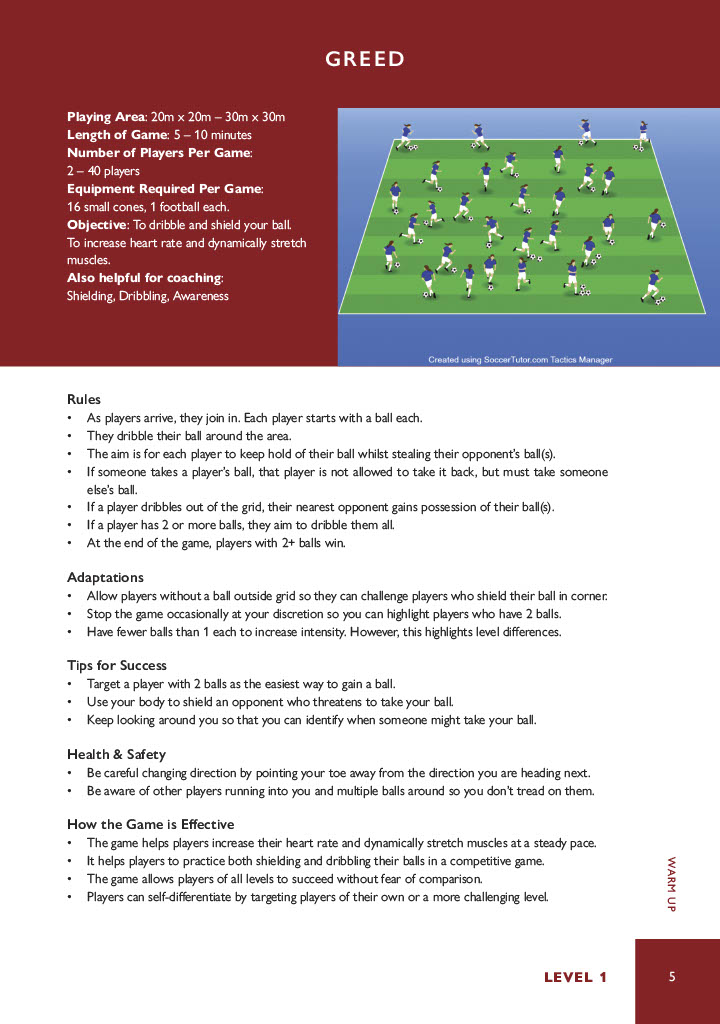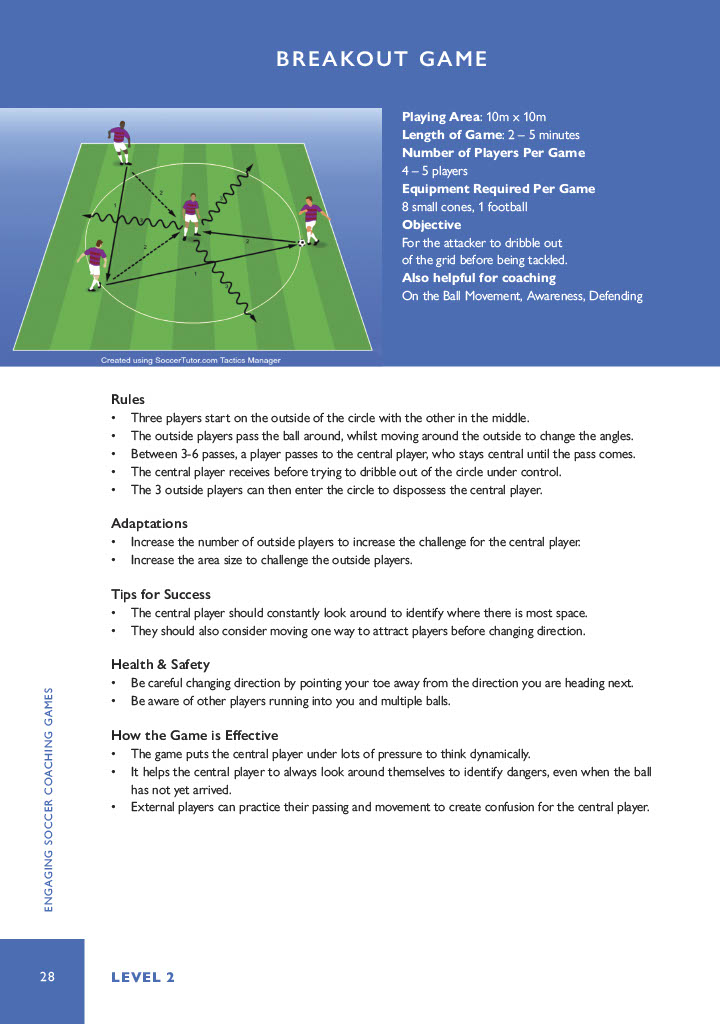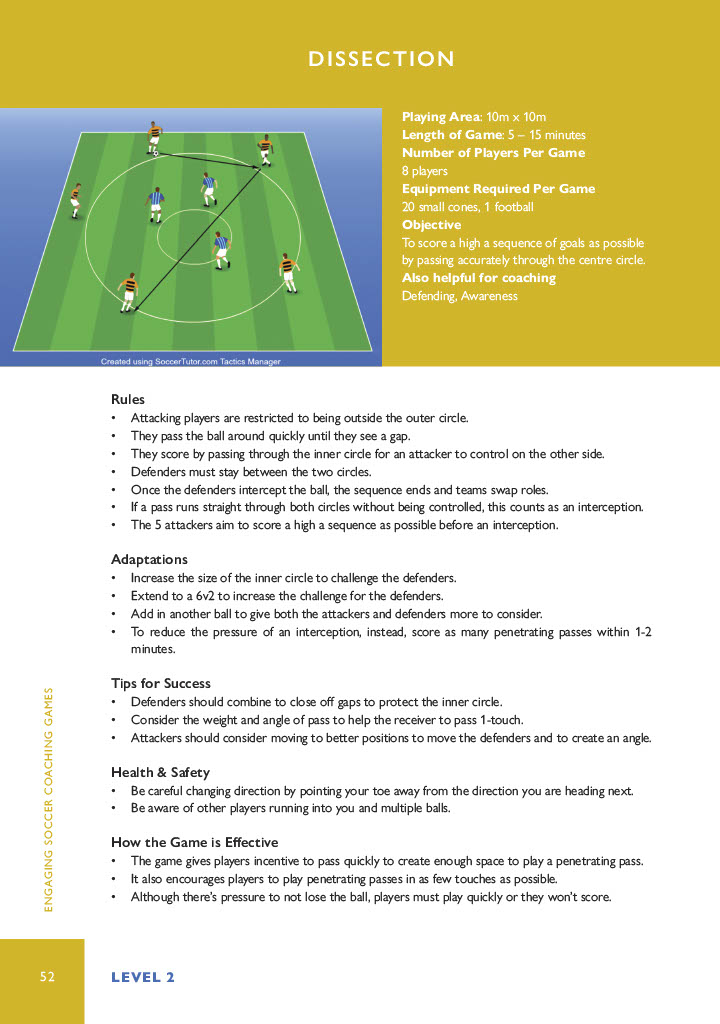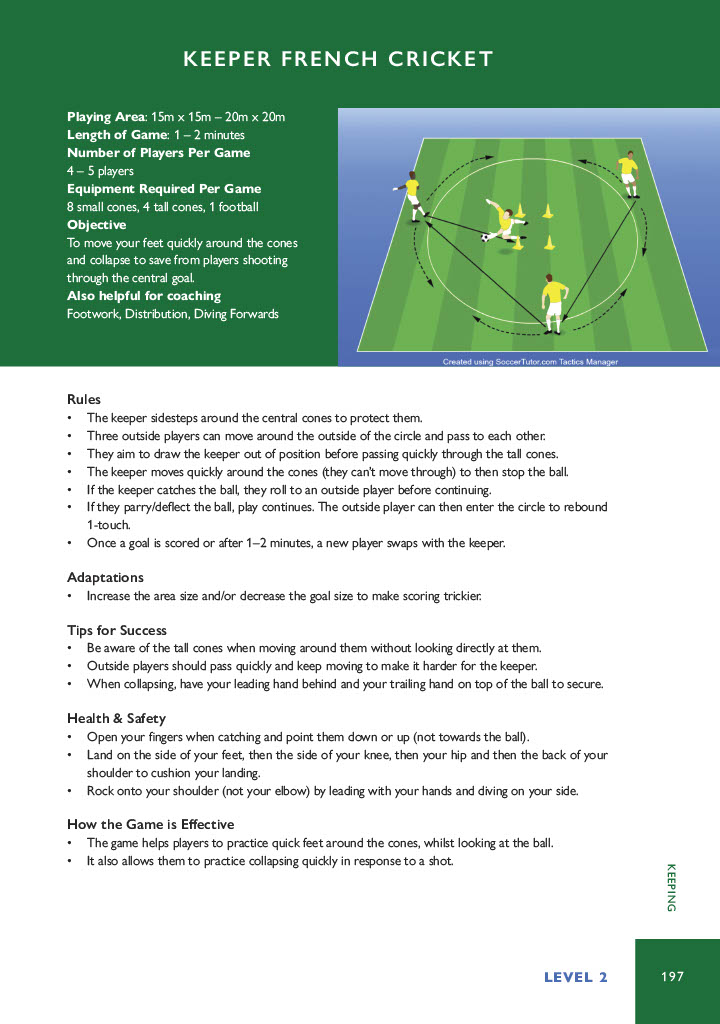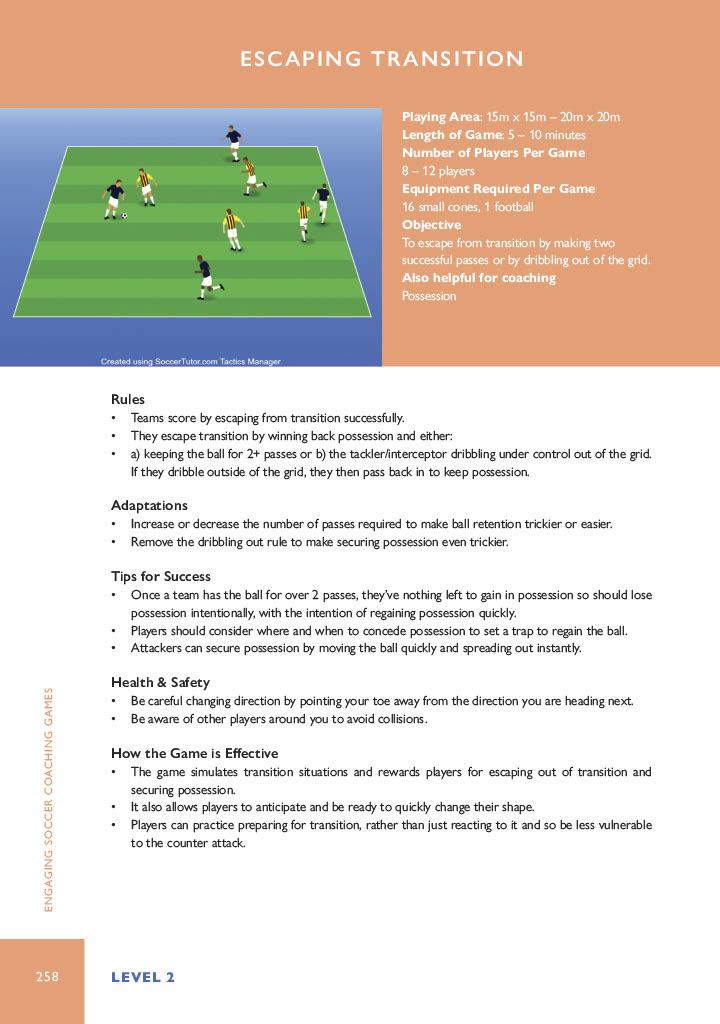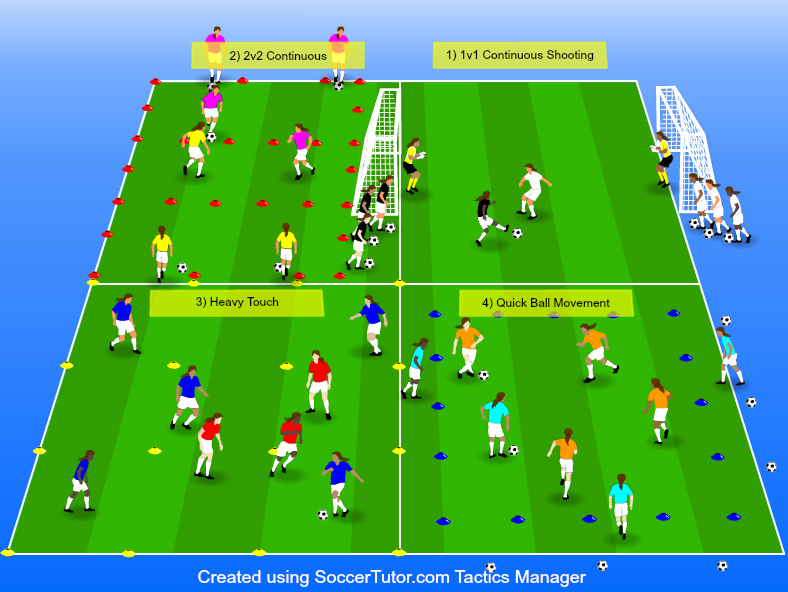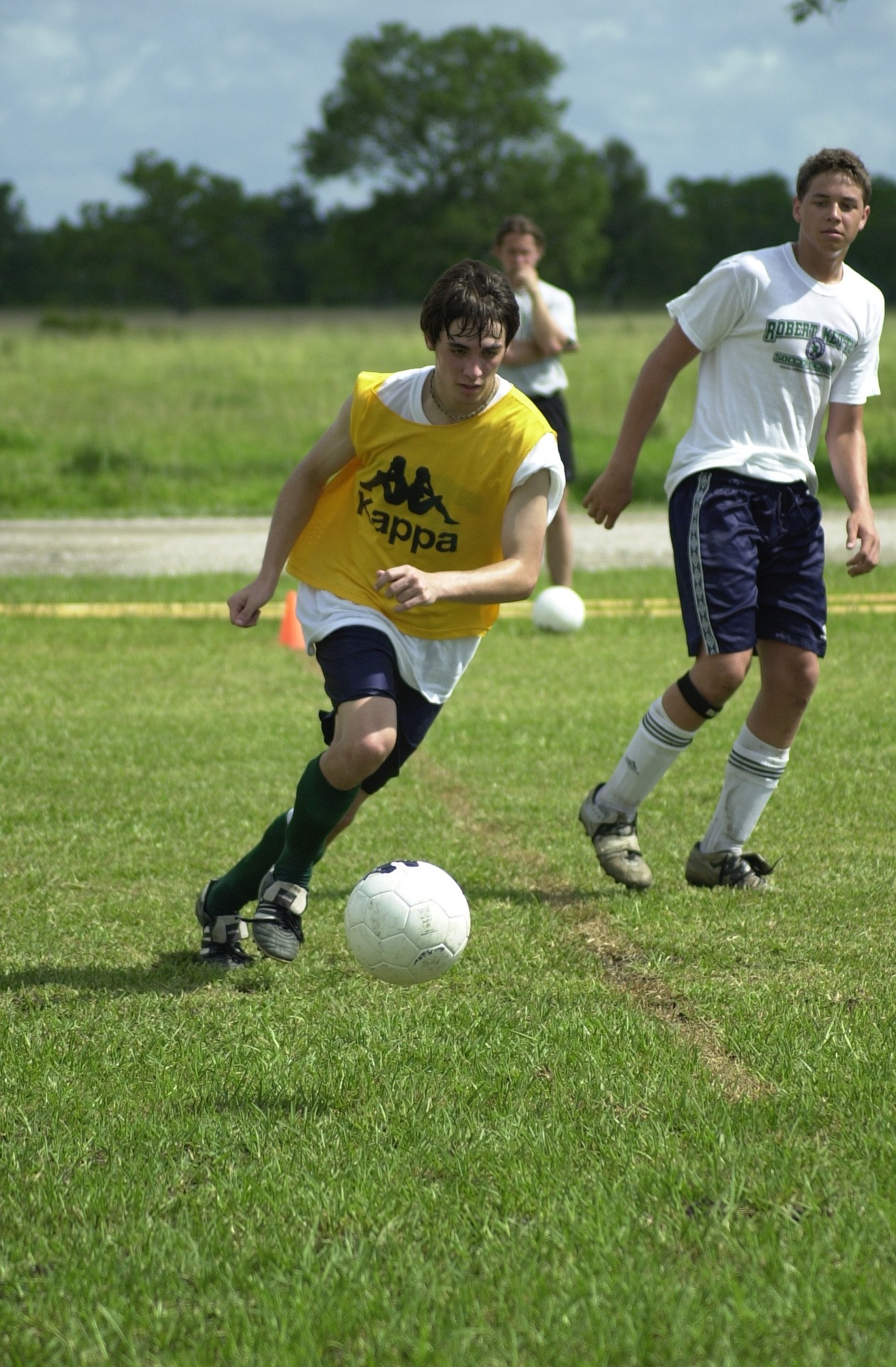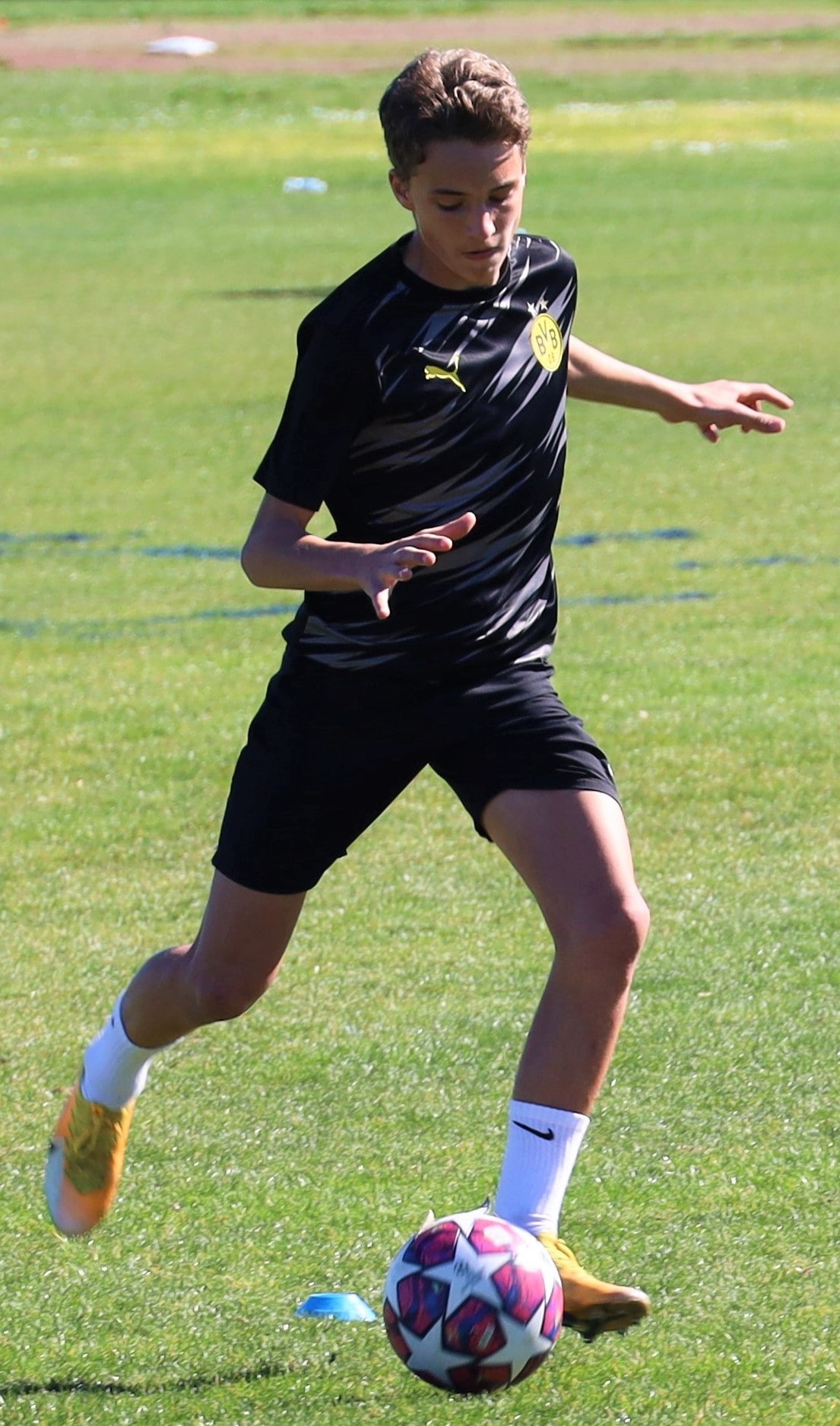How To Maximise Games
How We Maximise Our Games and How You Can Utilise Them Better
Our games are designed to reward players for positive play. The games balance maximising realism with increasing opportunities to practice the skill/tactic. They avoid opportunities for players to 'cheat' to win in a manner that is unrealistic or negative. However, they do encourage players to find personalised solutions that can be transferred into a match. How this is achieved is explained in the following examplar games.
How We Maximise Our Games
Warm Up - Greed
Awareness: This game helps players be aware of their surroundings as they are multitasking. They combine trying to gain possession with protecting their ball from other players. This guides players to keep looking around for threats, even when trying to win possession. It simulates the awareness a player moving to receive a pass needs, so they're aware of a challenge from behind.
Dribbling - Breakout
Identifying Space: On receiving the ball, the receiver must look at the players around them to identify space to move into. They should also be aware when space becomes closed up to identify other options to turn into.
Decision Making: The three external players can adapt their tactics to affect the receiver's decision, so they learn how to think dynamically in different situations.
Personalised Learning: Whilst the game appears simple, rotating and not knowing when the pass will come is a challenge to the receiver. If it's too easy, add an external player to increase the challenge.
Passing - Dissection
Penetrating Passes: It's important to play a penetrating pass with as few touches as possible, to limit the defence's time to cover gaps. However, passing 1-touch in these situations is a tricky skill so players often choose a safer option. This game practices this skill until the players are secure playing it under pressure.
Movement: The game encourages players to adjust their position to a) be in a better position to play a penetrating pass and b) be in space to receive a penetrating pass.
Angled Passes: As square passes are difficult to play a penetrating pass from, the circular shape ensures all passes are angled, so players used to setting each other up with an angled pass.
Goalkeeping -
Keeper French Cricket
Keeper French Cricket
Competition: Rather than just following a set of instructions to block shots, this game is fully competitive. This inspires the keeper to speed up their footwork to prevent shots on goal. It also puts pressure on the outer players to pass quickly and shoot only when there's space, so shots are taken sporadically (as in a match). This helps the keeper to get used to always being ready for a shot, but only committing themselves when a shot is taken.
Transition -
Escaping Transition
Escaping Transition
Solution: Our game combines practicing dribbling out of trouble (when there's no pass available) with instantly spreading out to give a passing option.
Realism: It is tricky to simulate a realistic environment for transition when players know what's coming. Our game combats this by motivating the attacking team to decide when they concede possession. This allows them to make it difficult for the opposition to secure possession, once they've won the ball.
How to Utilise Games Better
Whilst games are an invaluable coaching resource, there are many considerations for enhancing their effectiveness.
Here are some ways that you can use games to improve your training sessions.
Carousel of Reinforcement
Enhancing Fitness
- Use games rather than drills. Games contain more incentives for players to work harder,
- Set up a warm up game that players join in with on arrival to maximise their activity.
- Have the next game already set up so players can start quickly,
- Have recurring games each session to reduce explaining time and to maintain intensity,
- Initially have shorter length games to maintain a high intensity. Once players can maintain the intensity, gradually increase game length to extend.
- Have drinks close by and limit length of breaks to challenge players' recovery (initally have slightly longer breaks to build success),
- Expect players to jog to and from the drinks break.
- Choose high intensity, competitive games,
- Play small-sided games to increase ball-touches and maximise intensity,
- Limit stopping the practice to coach. Instead, use the short breaks for feedback,
- Place spare balls spread around the area perimeter to restart games immediately,
- Hold extra balls in your hands, to restart play,
Moving Players Out of Their Comfort Zone
Players commonly respond to new problems by referencing old knowledge so it's important to gradually encourage them to experiment by reinforcing their freedom to fail and learn from mistakes. As players' confidence grows, they'll take more responsibility for their decisions so that in time, thinking dynamically is normal.
Avoiding Comparison
All our games avoid comparison or include conditions to assist with reducing comparison. You can avoid these situations, whilst allowing all levels to compete with each other by subtly removing comparison:
- Emphasise that it's all player's responsibility to improve each other rather than to beat each other, if the team is to be successful.
- Avoid recording or announcing scores when you have a round robin system at your sessions.
- Educate players to set personal conditions as the main challenge alongside their opponent (see 'Adaptations' section for each game).
- Coach players to feedback to each other after each 1v1/2v2 battle to highlight the process, over the result. This includes both praise and advice.
- Encourage genuine shaking hands to show respect.
- Create an environment where competition is prioritised over counting.
- Prioritise games where there is no counting.
Personalised Learning
Some of our games e.g. 'Greed' (above) have layers of challenge so that when
players succeed, they meet a higher challenge. However,
some games are enhanced by players adapting their personal
challenge.
E.g. in a 1v1 confrontation, a more confident dribbler challenges themsleves to only shoot from their opponent's half and/or increase the size of their goal. Each game's 'Adaptations' section has other examples.
Be
careful not to have 'result based personalisation'. This is where one
player has to score more goals to win than their opponent. There is no
difference in the challenge to each player as the weaker player is
over challenged whilst the stronger player is under challenged.
These same principles apply with larger numbers per side.
On
occasion it can be good to have a much higher challenge. However, if
overused it's limiting as the player is likely to prioritise 'safe' options to avoid failure.
